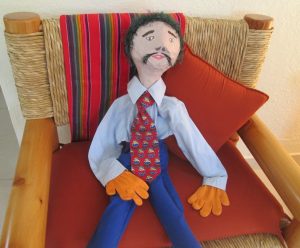“Do you speak Spanish?” the Mexican taxi driver asked me, in Spanish, as he drove me and my groceries home from my weekly shopping spree the other day.
I replied in my still-broken Spanish to the effect that, Well, I’m working on it! Little by little – “poco a poco” — I’m learning a few more words every day. By the time I’m 100 years old, I told him, I’ll be fluent!
He laughed at me good-naturedly. “And how long will that be?” he asked me (in Spanish, of course).
“Veinte-ocho años (28 years),” I said.
We both laughed.
I’m trying to take my glacial progress in Spanish-language-acquisition with good humor. It’s not the destination of fluency that I’m after so much as the pleasure of the quotidian journey: being able to communicate, even in small ways, with my Mexican friends and neighbors better each day; and stretching my old, inelastic brain in new directions.
I was heartened recently when I saw an article in the New York Times (“resurfaced” from their archives from March 17, 2012, “to show you how learning a second language can improve how you think”) on “The Benefits of Bilingualism.” The article, by Yudhijit Bhattacharjee, begins:
“Speaking two languages rather than just one has obvious practical benefits in an increasingly globalized world. But in recent years, scientists have begun to show that the advantages of bilingualism are even more fundamental than being able to converse with a wider range of people. Being bilingual, it turns out, makes you smarter. It can have a profound effect on your brain, improving cognitive skills not related to language and even shielding against dementia in old age.”
I was especially interested in that last point, about bilingualism’s effects on “the twilight years”:
“In a recent study of 44 elderly Spanish-English bilinguals, scientists led by the neuropsychologist Tamar Gollan of the University of California, San Diego, found that individuals with a higher degree of bilingualism — measured through a comparative evaluation of proficiency in each language — were more resistant than others to the onset of dementia and other symptoms of Alzheimer’s disease: the higher the degree of bilingualism, the later the age of onset.”
(For the whole article, go to: http://nyti.ms/13aiddX.)
So I’m inching toward that hoped-for proficiency. It’s my goal, but I don’t let it paralyze me. It’s the direction I’m headed toward, but I still stop to smell the flowers along the way.
I take private lessons with a patient and good-humored Spanish teacher, a lovely young Mexican woman named Edith, once a week. Every evening I watch some Spanish-language TV and try to pay close attention. I carry flash-cards with me when I go for long walks. I attempt to pound those pesky verbos into my thick skull daily.
And I learn even more Spanish when I teach English to my little class of niños at Aprendizaje del Ingles on Wednesday afternoons.
Yesterday I brought with me to class a new puppet I’d just made, whom I’ve named Profesor Isadoro Globo (globo means balloon: his papier mâché head was formed over a balloon). He taught the kids about the “natural world” (mundo natural), and they learned the new words to them: “mountain,” “valley,” “lake,” “river,” “beach,” “sea,” “desert,” “jungle,” and “forest.”
In the process, of course, I learned the words those kids already knew: montaña, valle, lago, rio, playa, mar, desierto, selva, and bosque. It was an exchange. We had fun.

Poco a poco.
